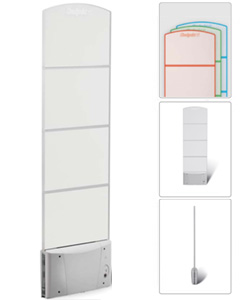Purchasing an EAS System
- Jul 23, 2019
Over the next several Loss Prevention Newsletters I will discuss Electronic Article Surveillance aka EAS. EAS is a highly effective method of reducing shoplifting and increasing profit. EAS is a technological method for preventing shoplifting from retail stores. Special tags are fixed to commonly stolen items. These tags are removed or deactivated by the clerks when the products are purchased.
EAS sytems are place at the entrance/exits of the store, a detection system sounds an alarm or otherwise alerts the staff when it senses active tags. Some stores also have detection systems at the entrance to the restrooms that sound an alarm if someone tries to take unpaid merchandise with them into the t. For high-value goods that maybe manipulated by the patrons, wired alarm clips called spider wraps may be used instead of tags. A retailer’s decision to purchase an Electronic Article Surveillance (EAS) system can seem to be a simple one. However, many of my customers failed to properly educate themselves and without proper research you will not get the outcome you are looking for.
With a little knowledge and planning, an EAS system can be an excellent return on investment, simple to use and maintain. Make sure you understand what you are getting into. There are many choices and terms you should be aware of as part of the buying decision: RF vs. AM
RF Radio Frequency. Checkpoint® is the leading manufacturer of RF systems. These tags are essentially a little radio station. Sensing is achieved by sweeping around the resonant frequency and detecting the chip. Deactivation of labels is typically accomplished using a deactivation pad. The deactivation pad functions by partially destroying the capacitor. To deactivate the label the item is passed within 12” vertically of the pad. The failure to disable (FTD) rate of RF systems is very low.
AM Acousto-Magnetic. Sensomatic® is the leading manufacturer of AM EAS systems. AM labels and tags are made of two strips: a strip of ferrous metal and a strip of a magnetically charged metal which is used as a biasing magnet (to increase signal strength) and to allow deactivation. The tag is deactivated by demagnetizing the strip, making the response small enough so that the detectors will not detect it. To disable the label item must make contact with the deactivation pad. Because of this the failure to disable (FTD) rate of AM systems is considerably higher than with RF systems. AM system and supplies are generally more expensive than RF systems. The selection of media is more limited than with the RF systems. Most of the major retailers are moving to Radio Frequency Identification (RFID), AM is losing ground, and RF is gaining wayside. Those systems are not compatible with RF or RFID while some models of RF systems can upgrade to RFID. AM systems may not be the best choice for small to medium retailer’s because the manufacturer tends to not be interested in that size retailer. So sales and support are in most cases nonexistent for small to medium retailers.
An EAS system is like any other equipment or tool you need to operate and ultimately turn a profit in your retail store. It is as necessary to any retailer as showcases for a jewelry store, clothing racks for an apparel store or shelving for a grocery store. As I have mentioned before there is no one size fits all approach or magic button to loss prevention. Taking the steps, like purchasing an EAS system will help you sell more, lose less and protect your investment. This will pay off in increased profit, higher job satisfaction for you and your employees and make your store a better place to shop.
Product Highlight:Checkpoint's Evolve-
 iRange of antennas offers intelligent, state-of-the-art solutions that are able to offer store operators enhanced detection capabilities, whatever the size of position of the EAS label.
iRange of antennas offers intelligent, state-of-the-art solutions that are able to offer store operators enhanced detection capabilities, whatever the size of position of the EAS label.
Bonus Tip:
Shoplifters often work in pairs or larger groups so that there can be at least one person distracting the sales staff while the other proceeds to steal. Thanks, -Mark Turner







Validate your login